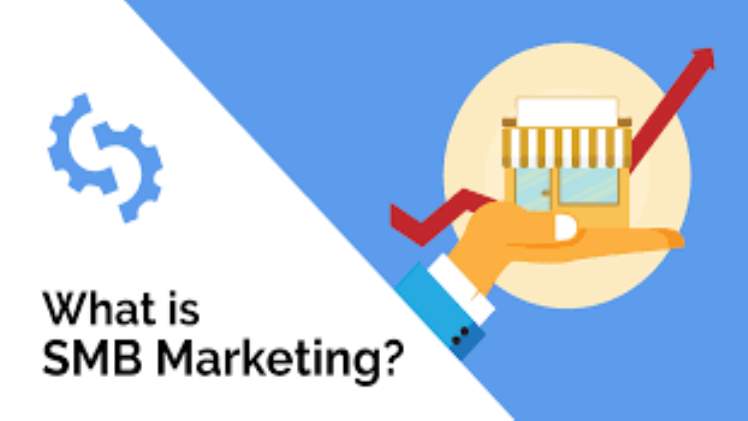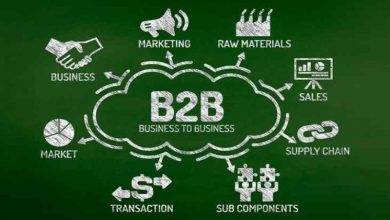SMBs: Build a Strong Digital Brand With These 3 Best Practices

Promoting any product or service is challenging in today’s market. Consumer behavior has changed and pushing your products in the hope of sales and customer loyalty just doesn’t cut it. Even with the world’s best product, you won’t impact your target audience without strong digital branding.
In this article, we’re talking you through three digital branding practices that will help your SMB create traction amongst its audience. But firstly, let’s clarify what digital branding is…
What is Digital Branding?
Digital branding is a mixture of elements that come together to help you build a powerful presence online.
Digital branding elements include your website, logo, and branding message. They also include your social media channels, content and email marketing strategies, and digital advertising — basically, all the things that help you communicate your brand to your target audience.
More Info About hiidude
Digital branding gives your company an identity. This identity could be the difference between your target audience choosing you over a competitor. How? It makes your company memorable by differentiating you and solidifying your spot in a busy marketplace.
A digital brand also helps you communicate your purpose and your values to customers. Take a moment to think about some of the most famous brands out there. They all have slogans synonymous with their logo and are linked to their underlying messaging — all wrapped up nicely in a tight and well-thought-out package.
To know more click Concealer
Subway – Eat Fresh
Nike – Just Do It
L’Oreal – Because you’re worth it
The above are just a select few but do you notice the trend? They all contain powerful words and define the brand’s ethos. Consumers confidently identify the brand just by the slogan. That’s powerful stuff.
You need to translate this kind of powerful impact into your digital branding. You might not yet be a household name, but for consumers to remember you, you need strong digital branding foundations.
With that in mind, what digital branding best practices should you implement for your SMB? Here are 3 impactful steps to get you started.
#1 Define your target audience. Really define it.
Every article you read about branding discusses how important defining your target audience is. There’s a reason for this — it’s crucial.
Let’s say you don’t spend time understanding who your audience is. Trying to make your brand appeal to everyone is a mistake that ends up with your brand not appealing to anyone. You’re not speaking any one direct language; instead, your messaging becomes mixed and directionless. True, appealing to everyone might increase your brand awareness, but it won’t push consumers down the brand funnel toward becoming loyal customers.
To define your target audience, you need to put in some serious groundwork to determine who are the people your product appeals to, what are their interests, what they expect from brands, and what they think of the competition.
Start by analyzing current customer behavior: what traits do they have in common? Find out which content they best respond to by utilizing Google Analytics and social platform in-built analytics within Facebook, Instagram, and Twitter.
Take what you learn from the two steps above to model target audiences and start marketing to them.
As a next step, determine if these actually are the right target audiences for you by conducting brand tracking to gather insightful feedback: is this the audience most positively impacted by your brand? What do they associate with your brand? How likely are they to choose your brand over the competition? The numbers will speak for themselves and you can make data-driven decisions on who you should be targeting.
#2 Design a logo that is more than just pretty
If your logo is hard to decipher, difficult or impossible to scale, or doesn’t fully embrace what your brand is about, start again. A logo might seem like a tick box exercise, but it most certainly isn’t. It holds power when it comes to digital branding.
A brand needs a strong logo; without it, you’ll struggle to build your brand across digital platforms. You need something that you can reuse everywhere. We’re talking email marketing, digital ads, website, all social profiles — you name it, your logo needs to be visible, recognizable, and, most of all, memorable.
Let’s look at McDonald’s. Their golden arches are recognizable around the world and are a key part of their brand identity. Each restaurant looks the same, it’s a scalable logo, and with only two colors, red and yellow, it’s easy to spot miles away. How many people do you know can’t identify the McDonald’s logo?
The McDonald’s logo is simple, memorable, and unique. But a logo also needs to embody brand values and connect with its core messaging. We can look to Airbnb for that.
The teardrop in the Airbnb logo represents two different things; a location pin and a person’s head — connecting both people and travel, which is their entire brand focus. Their slogan ‘Belong Anywhere’ resonates through the logo, their brand messaging and connects them with their customers’ desires—the desire to travel and meet new people in temporary locations and feel at home while doing so.
#3 Define your tone of voice and be consistent about it.
The tone of voice has a lot of weight when it comes to acquiring and retaining customers.
Defining your brand tone of voice is an important digital branding element because it’s how you communicate with your customers — when they make a purchase when they’re conducting preliminary research when they’re local customers. Learning how your audience speaks, the language they use, and how they prefer to communicate will place you in the best position to craft messaging that resonates with them.
If you fail to hit the mark with your tone of voice, or you’re not consistent in its delivery, your branding will become diluted and fragmented — you need to focus on creating a cohesive digital brand to elevate your brand amongst its target audience.
Email software company MailChimp is a great example of a well thought-through tone of voice. They’re aware software terminology can be off-putting and confusing for its customers, so they vow to keep things simple and non-patronizing with conversational language and offbeat humor to engage them throughout all communications. They say they ‘play with language to bring joy to [the customers’] work.’ This is true; check out some examples below:
This light-hearted copy on their signup landing page immediately establishes an informal connection with the user:
The light-hearted copy continues to make the brand more personable, more human, and conversational on Twitter:
Reader takeaways
There you have it. Three easy ways to get your digital marketing off the ground. If you click away from this article with anything, let it be that:
- Defining your target audience is the solid foundation for building an impactful, effective digital brand.
- You need a logo that is memorable and incorporates what you stand for as a brand.
- Tone of voice is essential to helping you craft a lasting impression with your brand identity.



